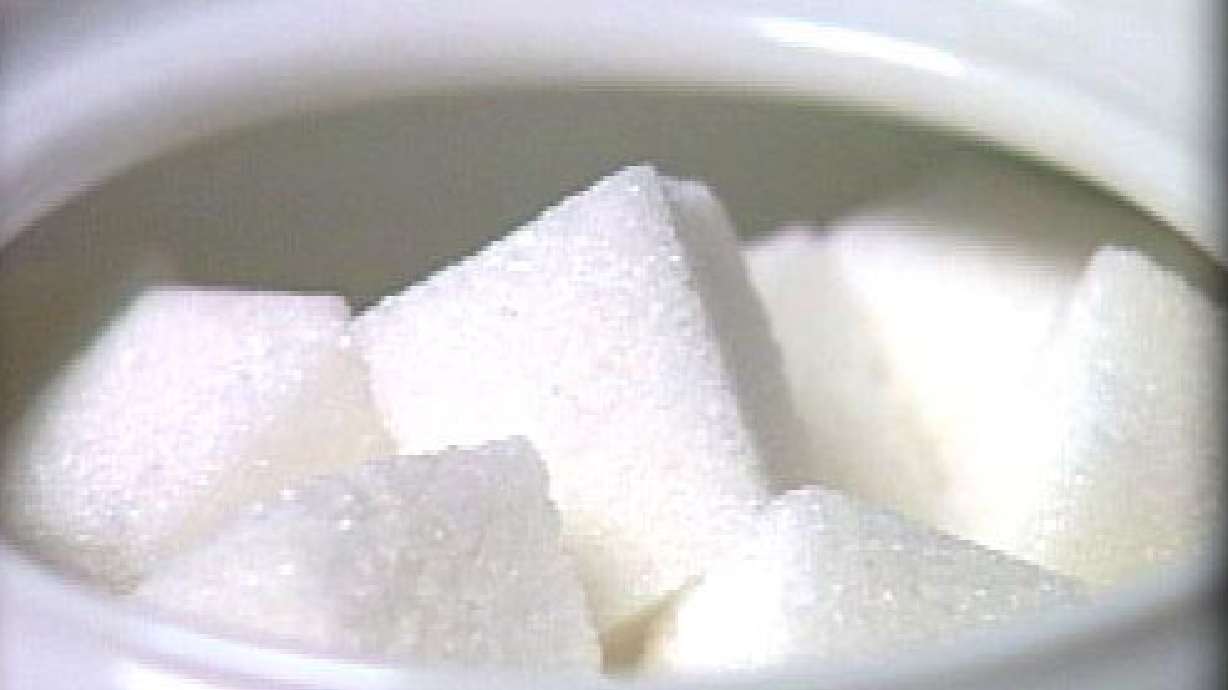Estimated read time: 4-5 minutes
This archived news story is available only for your personal, non-commercial use. Information in the story may be outdated or superseded by additional information. Reading or replaying the story in its archived form does not constitute a republication of the story.
SAN FRANCISCO -- Sweets: Americans love 'em. However, Bay Area musician Carlos Reyes says he grew up loving the sweet stuff a little too much.
"As a prize, we get the candy bar. As a prize, we get ice cream," he explained, adding that he's been heavy since he was 7 years old.
Carlos is not alone. Most Americans are either overweight or obese. A whopping one-third of all teens weigh too much and a fourth of all infants and toddlers are fat. And while the obesity epidemic is a complex problem, with many causes, some experts say sugars play a role.
Nutritionist Marion Nestle, PhD, MPH is a professor of food studies and public health at New York University. She says most people don't realize how much sugar they're eating, explaining how "the amount of sugars present in one large soft drink is more than most people should be eating in a day."
How much do we eat? In a new preliminary study, The USDA says last year alone, the average American consumed about 137 pounds of sugars and sweeteners. That's the equivalent of more than 27 five-pound bags of table sugar.
While the government says a small amount of sugar fits in a healthy diet, how did we get so awash in the sweet stuff?
Some blame the push to get out the fat. In the 1980s, 40 percent of our daily calories came from fat. Federal health officials, along with the American Medical Association and the American Heart Association urged Americans to cut back; fat-free foods became the latest fad.
Pediatric Endocrinologist Robert Lustig, MD of UCSF Medical Center says the push worked. "We did it," he said. "We're now down to 30 percent, and we have more heart disease, more obesity, more metabolic syndrome. It went exactly the opposite of what was supposed to happen." Cutting back on the fats may have backfired.
Lustig explained, "In order to make the processed foods palatable, we had to add sugar back in."
And adding the sugar back in, or just adding sugars period, may add up to nothing but trouble. Kelly Brownell, PhD of Yale University is an expert in obesity. He explains added sugars come at a cost.
"Americans have become accustomed to a high level of sweetness across all parts of the food chain," he says. "And therefore we like the sweetness. Sweetness tends to bring calories with it and that's one thing that's probably contributing to the obesity problem."
But some researchers point to politics and farm subsidies. In the early seventies, the Nixon Administration began doling out lucrative farm subsidies. Corn farmers ended up over-planting corn. The surplus went to producing high fructose corn syrup. High fructose corn syrup became easier and cheaper to use than regular sugar. It also helped to prolong the shelf life of foods. Even with these obvious benefits, Brownell says because HFCS is plentiful and so inexpensive, "it's been added to foods were we wouldn't expect it like mayonnaise, and ketchup, and things like beef stew."
The sugar and corn sweetener industries strongly disagree that their products cause obesity or ill health, saying the scientific evidence points elsewhere. Charles Baker, PhD is the Chief Science Officer for the Sugar Association, a trade group that represents the sugar industry. He says the notion that sugar is driving our obesity epidemic is simplistic and does the American consumer little good in understanding the value of total caloric intake. He says extra calories are extra calories no matter what the sources.
Cardiologist James Rippe, MD is a consultant to the Corn Refiners Association. He too rejects the notion that HFCS is the culprit behind America's obesity epidemic.
"Americans are consuming 27 percent more calories from all sources than we did 30 years ago and the increasingly sedentary lifestyle that we have in the United States. That's what causing obesity," Rippe explained.
However, a possible new culprit is now under scrutiny, It's a molecule found in all sugars and sweeteners: fructose. Eat too much of it, some researchers contend, and you'll gain excess weight, hurt your liver and develop insulin resistance.
Lustig says we get the same amount of fructose "whether you're consuming it by sugar or by high fructose corn syrup. It's not where you get the fructose; it's that you get the fructose at all that matters."
Those representing the sugar and sweetener industries say the research is terribly flawed and has no absolutely no reality in our daily diet.
As for how much sugar we should eat, it depends on your age, gender and activity level. The USDA, the folks behind the food pyramid, say the amounts of added sugars should be small, from 8 to 16 teaspoons.
And the Sugar Association maintains that Americans eat far less sugar than what's commonly quoted.
E-mail: drkim@ksl.com








